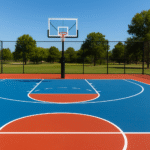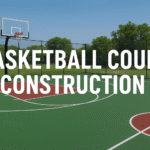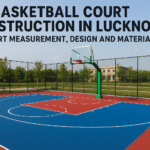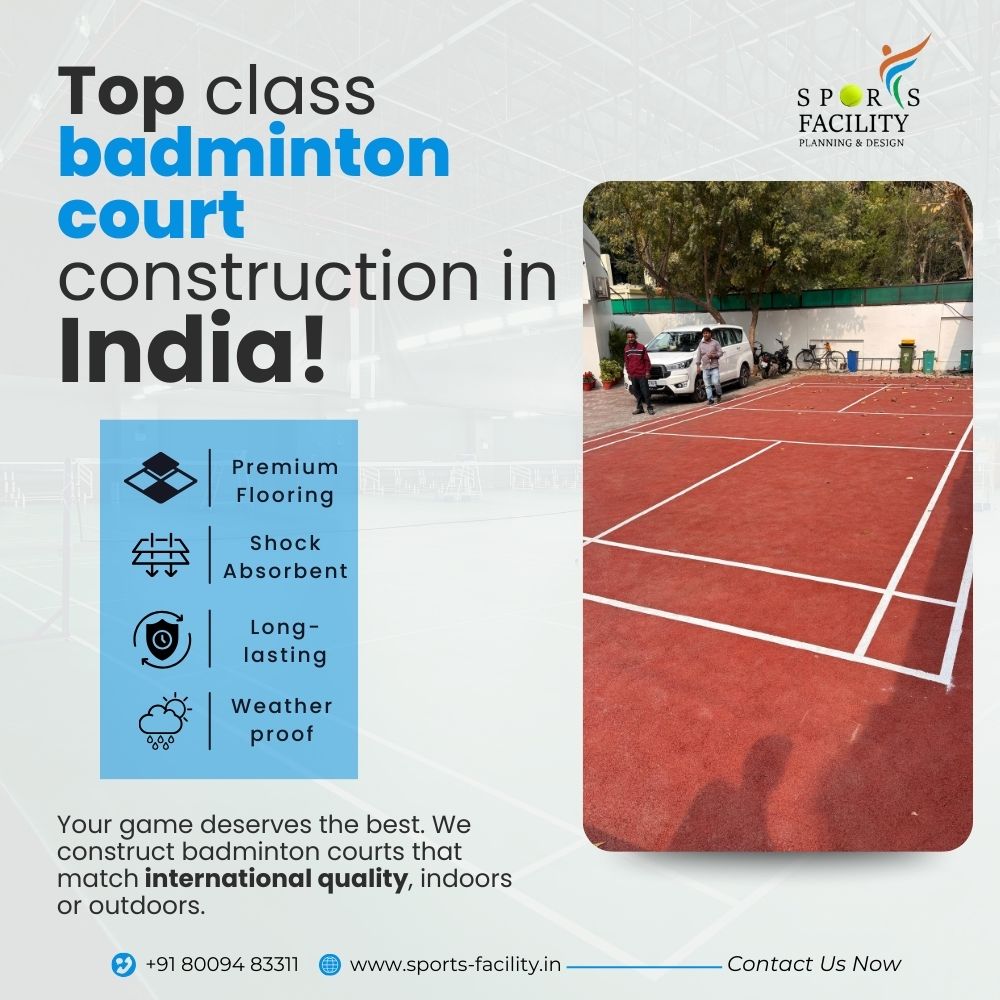Introduction
Badminton has rapidly grown from a recreational pastime to a competitive sport across India, and Delhi has emerged as a major hub for enthusiasts and professional players alike. From schools and colleges to residential societies and government sports complexes, the demand for professional badminton court construction in Delhi is at an all-time high.
Constructing a badminton court involves much more than laying a flat surface. It requires precise planning, proper material selection, base preparation, and expert installation to ensure player safety, durability, and compliance with official standards.
In this article, we’ll guide you through everything you need to know about building a badminton court in Delhi — types, construction process, costs, and maintenance tips.
Why Build a Badminton Court in Delhi?
Growing Demand for Sports Facilities – With local tournaments, school competitions, and government initiatives, badminton’s popularity in Delhi continues to rise.
All-Weather Play – Synthetic and wooden flooring allows year-round use, even in extreme heat or monsoon conditions.
Health & Fitness – Badminton improves agility, stamina, coordination, and teamwork, making it ideal for schools, gyms, and residential communities.
Professional Training Grounds – High-quality courts are essential for nurturing future athletes and hosting competitive events.
Types of Badminton Courts in Delhi
Selecting the right court type is crucial for performance, safety, and durability:
Wooden Courts
-
Ideal for indoor stadiums and professional arenas.
-
Offers excellent grip, consistent bounce, and reduces joint stress.
-
Requires regular maintenance, including polishing and recoating.
Synthetic Courts
-
Popular for schools, gyms, and semi-outdoor facilities.
-
Made from PVC, PU, or acrylic materials.
-
Durable, anti-slip, weather-resistant, and low-maintenance.
Concrete Courts
-
Common for outdoor community courts.
-
Cost-effective but hard on joints and prone to cracks over time.
Standard Badminton Court Dimensions
Badminton courts in India follow Badminton World Federation (BWF) standards:
-
Full Court (Doubles): 13.4 meters x 6.1 meters
-
Half Court (Singles): 13.4 meters x 5.18 meters
-
Net Height: 1.55 meters at the edges, 1.524 meters at the center
-
Service Lines & Markings: Durable, non-slip paint ensures clarity and longevity
Step-by-Step Badminton Court Construction in Delhi
1. Site Selection & Preparation
-
Choose level ground with proper drainage.
-
Ensure accessibility and adequate lighting for outdoor courts.
-
Clear debris and prepare the base for construction.
2. Base Construction
-
RCC or concrete foundation for stability.
-
Slight slope for outdoor courts to prevent waterlogging.
3. Surface Installation
-
Wooden flooring for professional indoor courts.
-
Synthetic PVC, PU, or acrylic flooring for schools, gyms, and semi-outdoor courts.
4. Court Markings & Finishing
-
Paint lines according to BWF standards using weather-resistant paint.
-
Optional: branding, logos, or club emblems.
5. Accessories Installation
-
High-quality nets, poles, and posts.
-
Optional: floodlights, fencing, and seating arrangements.
Cost of Badminton Court Construction in Delhi
Costs vary depending on materials, court size, and location:
-
Synthetic PVC/PU Flooring: ₹70 – ₹120 per sq. ft
-
Wooden Indoor Flooring: ₹200 – ₹350 per sq. ft
-
Concrete Outdoor Courts: ₹50 – ₹80 per sq. ft
👉 On average, constructing a full-size synthetic badminton court in Delhi costs between ₹6 – ₹12 lakhs, including base, flooring, and accessories.
Maintenance of Badminton Courts
Proper maintenance ensures longevity and performance:
-
Regular cleaning to remove dust, dirt, and moss.
-
Periodic inspection for cracks or uneven surfaces.
-
Resurface synthetic courts every 5–7 years.
-
Wooden courts require more frequent polishing and recoating.
Challenges in Badminton Court Construction in Delhi
-
Weather Conditions: Intense heat and heavy rains require UV-protected, water-resistant surfaces.
-
Unskilled Contractors: Poor workmanship can compromise safety and durability.
-
Budget Constraints: Planning for long-term maintenance is essential to avoid unexpected costs.
Conclusion
Badminton court construction in Delhi is growing rapidly due to increasing demand from schools, colleges, residential societies, and government projects. Whether building a small community court or a professional indoor stadium, selecting the right materials, hiring experienced contractors, and maintaining the court properly will ensure long-lasting performance and safety.
For professional badminton court construction in Delhi, consult experts like Sports-Facility.in, who specialize in synthetic and wooden flooring with complete project execution from planning to finishing.




